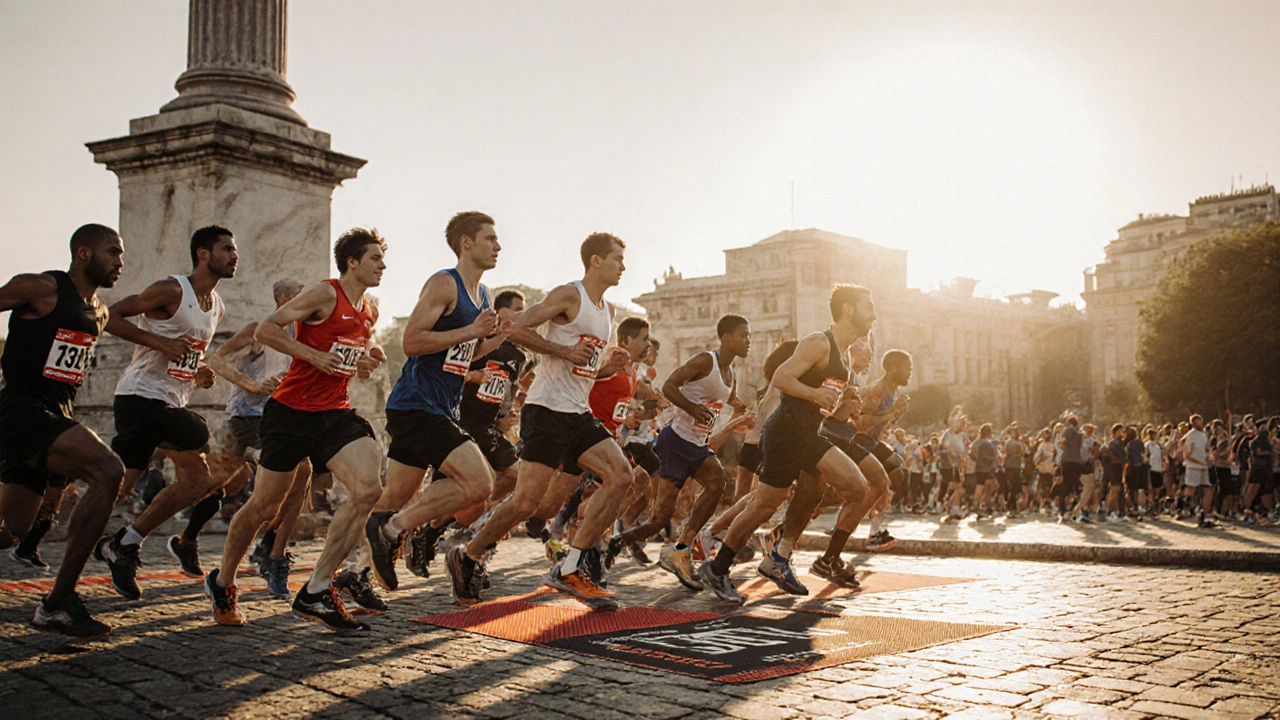
Marathon Pacing: How to Hit Your Ideal Race Speed
When working with marathon pacing, the practice of managing your speed throughout the 42.195‑kilometre distance. Also known as race tempo planning, it links directly to marathon training, the structured workouts that build endurance and speed and race strategy, the plan for when to push, hold steady, or recover during a race. Good running nutrition, fueling before and during the run also influences pacing, while post‑run marathon recovery, the process of repairing muscles and restoring energy determines how quickly you can repeat a fast effort. In short, mastering pacing means blending training, strategy, and nutrition into a single, repeatable rhythm.
One key semantic link is that marathon pacing encompasses race strategy: you decide where to conserve energy, where to stay with the lead pack, and when to tap into your last reserves. Another connection is that marathon training requires specific interval sessions—like 800‑meter repeats at target race pace—to teach your body the feel of that speed. Meanwhile, running nutrition influences your ability to sustain that pace; carbs loaded before the start and carbohydrate gels mid‑race keep blood sugar stable, preventing the dreaded bonk that throws pacing off track. Finally, marathon recovery feeds back into the cycle, as well‑managed rest lets you train harder next week, sharpening your pacing accuracy.
Why Pacing Matters for Every Runner
Beginners often start too fast, convinced a strong early surge will win the race. Data from recent UK marathons shows a 70% drop‑out rate among runners who exceed their target pace by more than 10% in the first 10 km. Seasoned runners use pacing charts to stay within a narrow speed window—usually ±5 seconds per kilometre—so they avoid early fatigue and finish strong. The chart is a visual representation of the semantic triple: "marathon pacing requires a realistic race strategy". By plotting split times before the event, you turn an abstract goal into a concrete plan that your body can follow.
Another practical tip: match your training runs to the terrain you’ll face on race day. If the marathon route includes hills, integrate hill repeats into your training, because the biomechanical demand of climbing will alter your average speed. This illustrates the triple "running nutrition influences marathon pacing"—you’ll need extra carbs for uphill effort, and a well‑timed hydration plan to keep electrolytes balanced, preventing cramping that forces you to slow down.
Age also plays a role, but it’s not a barrier. Articles in our collection, like "Running a Marathon at 30" and "Best Age to Run a Marathon," show how runners in their 30s and 40s tweak their pacing by adding longer recovery weeks and focusing on strength work. The underlying semantic link is "marathon training adapts to age", meaning your training volume and intensity shift while your pacing targets stay realistic for your physiological profile.
When you combine all these elements—structured training, smart race‑day strategy, personalized nutrition, and diligent recovery—you create a feedback loop that sharpens your pacing instinct. Over weeks, you’ll notice your heart rate steadies at your target pace, you can hold conversation without gasping, and your finishing time drops without feeling exhausted. This loop embodies the triple "marathon pacing enables better race outcomes" and shows why each related entity matters.
Ready to put these ideas into action? Below you’ll find articles that dive deeper into each piece of the puzzle—how to build a pacing plan, what workouts simulate race speed, which gels work best, and recovery protocols that let you bounce back faster. Use this guide as your launchpad, pick the tips that fit your experience level, and start fine‑tuning your marathon pacing today.
